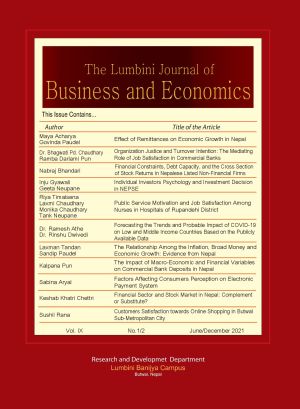Financial Sector and Stock Market in Nepal: Complement or Substitute?
DOI:
https://doi.org/10.3126/ljbe.v9i1-2.45993Keywords:
ARDL, Complement, Financial Sector, Stock Market, Substitute, NepalAbstract
This paper empirically examines the complement or substitute relationship between Nepalese financial sector and stock market using annual data from 1988 till 2019. The time series data underwent unit root tests without structural breaks employing Dickey Fuller-GLS and Philips-Perron tests followed by tests of unit root with structural break using Zivot and Andrew (1992) model. The ARDL approach to co-integration in the presence of one structural break was employed to analyze the long-run relationship. The results reveal that there exists bidirectional causal relationship between financial sector development and stock market development in the short-run. However in the long-run it is the stock market development that significantly causes financial sector development. The significant positive relationship between financial intermediary indicator (credit-to-private sector) and stock market development indicator (market capitalization ratio) reveal that financial sector development and stock market development are complementary to each other both in the short-run and in the long-run. Saving rate is observed to have important role in determining stock market development whereas investment and inflation are found influencing to determine financial sector development.




